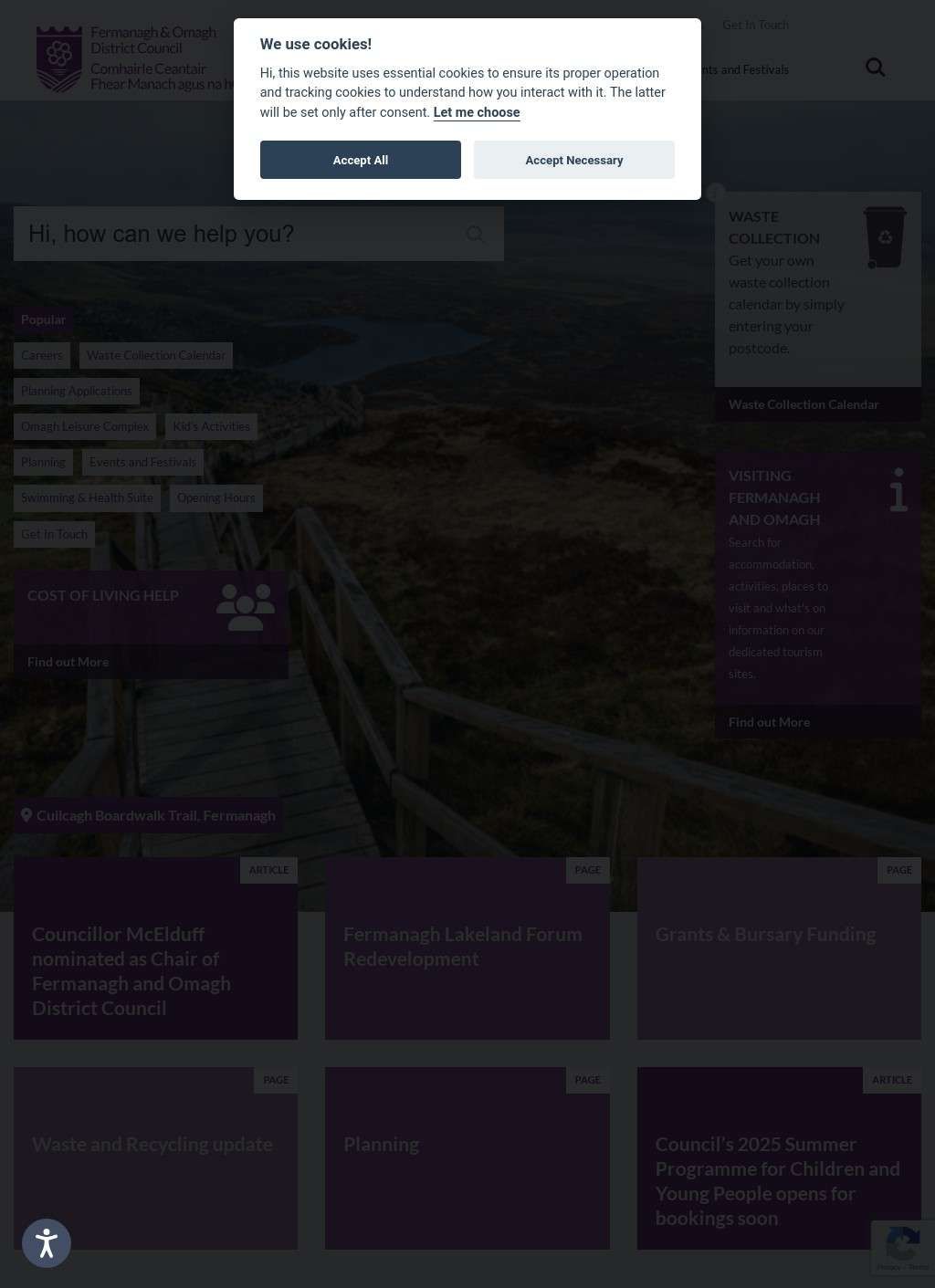Fermanagh and Omagh District Council represents a significant chapter in Northern Ireland's local government evolution, emerging in April 2015 from the merger of the former Fermanagh District Council and Omagh District Council. This expansive local authority now governs one of Northern Ireland's largest geographical areas, covering all of County Fermanagh and substantial portions of County Tyrone. The council serves approximately 115,000 residents across this vast territory that stretches from the shores of Lough Erne to the Sperrin Mountains, encompassing both urban centres and remote rural communities that define the character of Northern Ireland's southwest.
The council's administrative structure reflects the dual nature of its territory, maintaining principal offices in both Enniskillen and Omagh to ensure accessibility for residents across this extensive district. This dual-centre approach acknowledges the distinct identities and needs of both historic counties whilst working to create synergies and shared services that benefit all communities. The democratic framework comprises 40 elected councillors representing seven district electoral areas, who meet regularly to make decisions affecting everything from waste collection schedules to major tourism initiatives that could transform the local economy.
Tourism development stands as perhaps the council's most visible priority, recognising the extraordinary natural and cultural assets within its boundaries. The Fermanagh Lakelands, centred on the magnificent Upper and Lower Lough Erne with their 365 islands, offer unparalleled opportunities for water-based recreation and peaceful escapes. The council actively promotes attractions like the Marble Arch Caves Global Geopark, Florence Court, Castle Coole, and the dramatic Cuilcagh Mountain Boardwalk, working with Tourism Northern Ireland to position the region as a premier destination for outdoor enthusiasts and heritage seekers alike.
Economic development initiatives extend far beyond tourism, with the council operating comprehensive business support programmes designed to nurture entrepreneurship and sustain existing enterprises. Teams provide guidance on everything from startup funding to export readiness, recognising that small and medium enterprises form the backbone of the local economy. Rural development receives particular attention given the district's largely agricultural character, with programmes supporting farm diversification, rural tourism ventures, and community-led regeneration projects that help sustain villages and townlands facing population decline.
Environmental stewardship takes on special significance in a district blessed with such natural beauty. The council manages extensive recycling programmes, maintains countless miles of rural roads, and protects numerous areas of outstanding natural beauty. Climate action strategies increasingly influence decision-making, from promoting renewable energy projects to supporting biodiversity initiatives that preserve the habitats supporting everything from red squirrels to the recently reintroduced white-tailed eagles. The Sperrin Area of Outstanding Natural Beauty and the Erne system's wetlands require careful management to balance conservation with public access.
Cultural and recreational services provided by the council enrich community life across the district. Libraries in towns and villages serve as vital community hubs, offering not just books but internet access, educational programmes, and social spaces crucial in rural areas. The Strule Arts Centre in Omagh and various smaller venues host performances, exhibitions, and workshops that bring professional arts to local audiences whilst nurturing homegrown talent. Sports and leisure facilities, from swimming pools to playing fields, promote health and wellbeing across all age groups.
Planning and building control responsibilities shape the physical development of the district, with teams processing applications that range from agricultural sheds to major commercial developments. The council must balance development pressures with the need to preserve the landscape quality and settlement patterns that make the area distinctive. Conservation areas in historic towns like Enniskillen require particularly sensitive handling, whilst rural planning policies aim to sustain farming communities whilst preventing inappropriate development that could damage the countryside's character.
Community planning partnerships bring together public agencies, voluntary organisations, and community groups to address complex challenges that no single organisation could tackle alone. Issues like rural isolation, youth retention, broadband connectivity, and health service access require coordinated responses. The council facilitates these partnerships, recognising that many of the most pressing issues facing residents require collaboration across traditional organisational boundaries. Grant programmes support hundreds of community groups delivering everything from meals on wheels to youth clubs.
Digital transformation increasingly shapes service delivery, though the council must balance online innovation with the needs of residents in areas with poor connectivity or limited digital skills. Online planning applications, waste collection calendars, and payment systems improve efficiency for many users, whilst traditional service channels remain essential for others. The council's websites provide comprehensive information about services whilst social media channels offer real-time updates about everything from road closures to event announcements.
The unique cross-border location of the district creates both opportunities and complexities. Many residents regularly cross into Counties Donegal, Leitrim, Cavan, and Monaghan for work, shopping, or social activities. The council participates in various cross-border initiatives, recognising that rivers, roads, and communities don't stop at international boundaries. This cooperation becomes particularly important for emergency planning, tourism promotion, and environmental management where ecosystems span the border.
Budget constraints challenge the council to maintain service quality whilst managing costs carefully. The merger that created the current council aimed partly at achieving economies of scale, though harmonising different systems and practices took considerable time and effort. Ongoing efficiency drives seek to maximise value for ratepayers whilst protecting frontline services that communities depend upon. The council must also navigate the complexities of serving areas with very different needs - from Omagh's urban requirements to the isolated communities around the Fermanagh lakes.
Looking ahead, Fermanagh and Omagh District Council faces the dual challenge of preserving what makes the district special whilst adapting to changing demographics, economic patterns, and climate realities. Major projects like the development of tourism infrastructure around Lough Erne and the enhancement of town centres aim to create sustainable prosperity. The council's strategic vision focuses on making the district an even better place to live, work, and visit, building on natural advantages whilst addressing longstanding challenges around connectivity, economic opportunity, and service provision in rural areas.
